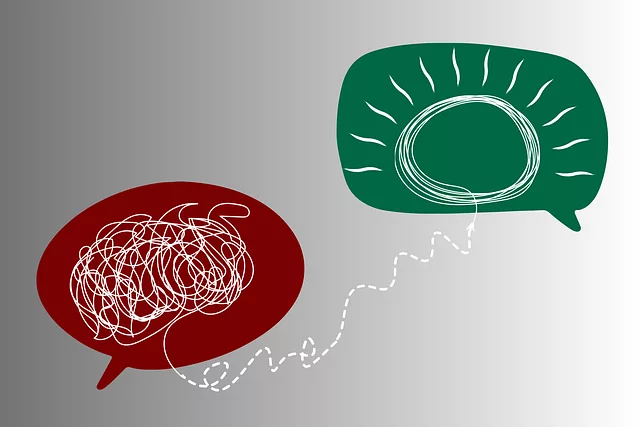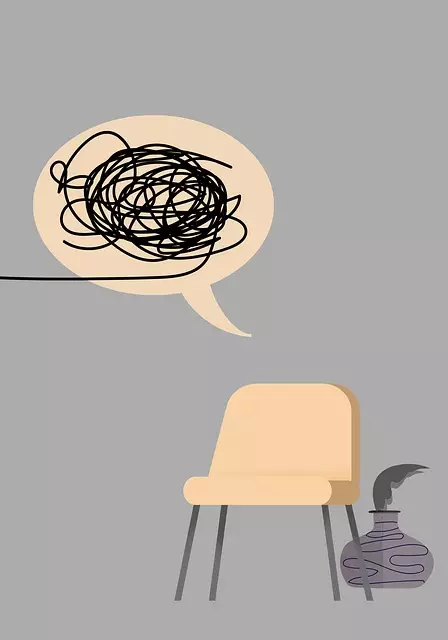Therapeutic Cognitive Restructuring: Unlocking Mindset Changes with CBT
Therapeutic cognitive restructuring, a cornerstone of Cognitive Behavioral Therapy (CBT), empowers i…….

Therapeutic cognitive restructuring, a cornerstone of Cognitive Behavioral Therapy (CBT), empowers individuals to challenge and reframe negative thought patterns. By understanding how our thoughts influence emotions and behaviors, CBT offers a structured approach to mental well-being. This article delves into the intricacies of CBT, highlighting the pivotal role of cognitive restructuring in managing various psychological challenges. We’ll explore techniques for identifying and modifying distorted thinking, fostering realistic and adaptive beliefs, and implementing therapeutic change effectively.
Understanding CBT Therapy: A Brief Overview

The Role of Cognitive Restructuring in CBT

Cognitive restructuring is a core component of Cognitive Behavioral Therapy (CBT), a widely recognized and effective therapeutic approach. It focuses on challenging and modifying negative or distorted thinking patterns that contribute to emotional distress and maladaptive behaviors. By identifying and changing these cognitive distortions, individuals can gain a more balanced and realistic perspective, leading to improved mental health and well-being.
In CBT, therapists help clients recognize their automatic negative thoughts, which are often quick, impulsive, and unhelpful beliefs that arise in response to certain situations or triggers. Restructuring involves questioning these thoughts, evaluating the evidence for and against them, and developing more rational alternative interpretations. This process empowers individuals to manage their emotions, make healthier choices, and ultimately enhance their overall quality of life.
Identifying Negative Thought Patterns

Identifying negative thought patterns is a crucial step in therapeutic cognitive restructuring, a core technique within Cognitive Behavioral Therapy (CBT). These patterns often manifest as automatic negative thoughts (ANTs) that can significantly impact an individual’s emotional well-being and behavior. By becoming aware of these persistent and unhelpful thoughts, individuals can begin to challenge and replace them with more balanced and realistic perspectives.
Through introspection and self-monitoring, one can recognize recurring themes in their thinking, such as all-or-nothing thinking, catastrophizing, or jumping to conclusions. CBT encourages individuals to question the validity of these thoughts, considering alternative explanations and evidence that contradicts them. This process empowers people to develop healthier cognitive habits, leading to improved emotional regulation and overall mental health.
Challenging Distorted Thinking

Therapeutic cognitive restructuring, a core component of CBT (Cognitive Behavioral Therapy), focuses on identifying and challenging distorted thinking patterns that contribute to emotional distress. This process involves helping individuals recognize their negative or irrational thoughts and replacing them with more balanced and realistic perspectives. By examining evidence and exploring alternative explanations, clients learn to question the validity of these thought distortions, which often include all-or-nothing reasoning, catastrophizing, and overgeneralization.
Through this restructuring, individuals gain a deeper understanding of how their thinking influences their feelings and behaviors. This newfound awareness equips them with the tools to navigate challenging situations more effectively, fostering resilience and promoting overall mental well-being.
Developing Realistic and Adaptive Beliefs

In CBT therapy, developing realistic and adaptive beliefs is a core goal. This involves identifying and challenging negative or distorted thought patterns that contribute to emotional distress and replacing them with more balanced, accurate perspectives. By questioning the evidence supporting these unhelpful beliefs, individuals can learn to reframe their perceptions and adopt healthier cognitive frameworks.
This process encourages individuals to set aside all-or-nothing thinking and embrace a more nuanced view of themselves and their experiences. It helps them recognize that thoughts are just thoughts, not facts, and that they have the power to choose how they interpret and respond to them. This shift in belief system lays the foundation for improved emotional well-being and enhanced problem-solving skills in daily life.
Techniques for Implementing Therapeutic Change

Therapeutic cognitive restructuring, a key component of CBT (Cognitive Behavioral Therapy) therapy, involves several effective techniques for implementing positive change. One powerful method is challenge thinking errors, encouraging individuals to recognize and reframe negative or distorted thoughts. This process helps clients develop more balanced perspectives, fostering emotional well-being.
Another technique is behavioral activation, where therapists guide patients to engage in activities that promote a sense of pleasure and accomplishment. By increasing participation in enjoyable activities, this approach aims to improve mood and disrupt unhelpful patterns, ultimately leading to lasting behavioral changes.
Benefits, Limitations, and Practical Tips

Benefits: Therapeutic cognitive restructuring is a powerful tool within CBT therapy, offering individuals a chance to challenge and change unhelpful thought patterns. By identifying and modifying negative or distorted thinking, individuals can experience significant improvements in their emotional well-being and overall mental health. This process empowers people to develop healthier perspectives, leading to better coping mechanisms and enhanced problem-solving abilities. Research suggests that cognitive restructuring is effective for a range of conditions, including depression, anxiety disorders, and post-traumatic stress disorder (PTSD). It encourages folks to take ownership of their thoughts, fostering self-awareness and resilience.
Limitations: While therapeutic cognitive restructuring has proven beneficial, it may not be suitable for everyone. Some individuals might struggle with the challenge of questioning long-held beliefs or may find it difficult to identify automatic negative thoughts. Additionally, this approach requires time and effort, as it involves deliberate practice and consistent application in daily life. Not all therapists are equally skilled in this technique, so finding a qualified professional who specializes in CBT therapy is essential for optimal results.






